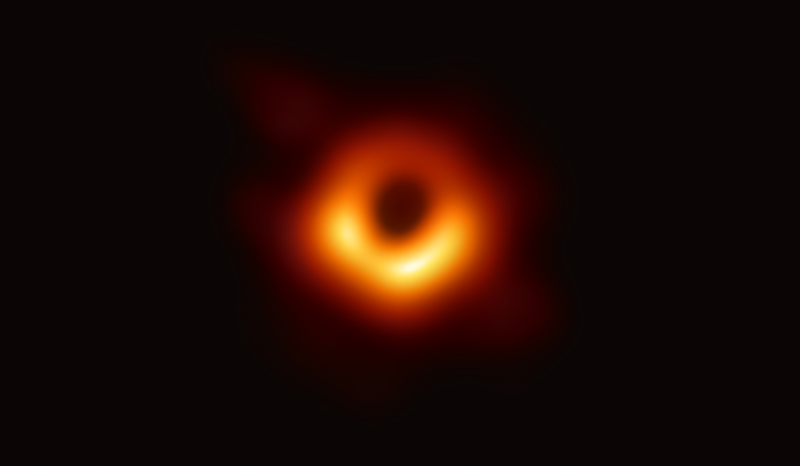A new study has suggested that the regular bursts of high-energy gamma-rays, striking Earth every 76 minutes, originate from a mysterious rotating gas blob near the heart of the Milky Way‘s supermassive central black hole. This discovery by astrophysicists from the National Autonomous University of Mexico sheds light on a...
New Discovery
Spider pulsars are the dead stars wreaking havoc on their neighbors. They strip companion stars through energetic particle winds, and Chandra’s recent findings, set to be published in the December issue of the Monthly Notices of the Royal Astronomical Society, reveal their destructive nature on an extreme scale. As described...
The James Webb Space Telescope (JWST) has detected water vapor and methane in the atmosphere of an exoplanet named WASP-80 b. Located nearly 163 light-years away, the gas giant exoplanet, which orbits a K-type star, happens to be similar to our own gas giant Jupiter, both in aesthetics and components....
In 2019, a collaborative effort among the world’s astronomers successfully captured a historic image of the black hole in Messier 87. The moment was the most significant for humanity in terms of space exploration. Further exploration of the black hole’s image has lately defied conventional understanding, contrary to its notorious...
NASA’s James Webb Space Telescope has sent a stunning image of the Milky Way’s galactic center. The image displays a portion of the dense central area, a never-before-seen view of the Sagittarius C (Sgr C) star-forming region, situated around 300 light-years from Sagittarius A*, the central supermassive black hole of...
The peaceful exterior of the cosmos often hides the tumultuous and explosive events that have occurred within its vast expanse. Recently, the NASA’s Hubble Space Telescope captured an image of NGC 941, a spiral galaxy with an explosive past, situated approximately 55 million light-years away in the constellation Triangulum. The...
NASA’s Hubble Space Telescope has measured the size of the nearest Earth-sized exoplanet known as LTT 1445Ac, which orbits a star within the constellation Eridanus. Initially found by NASA’s Transiting Exoplanet Survey Satellite (TESS) in 2022, LTT 1445Ac’s exact size remained uncertain due to the limitations of TESS’s optics. Emily...
NASA’s ten billion dollar James Webb Space Telescope is likely to illuminate the secrets at the center of the Milky Way, providing answers to longstanding astronomical mysteries. Over 100 astronomers from around the world have recently called for the James Webb Space Telescope (JWST) to conduct a comprehensive survey of...
A set of seismic data collected by NASA’s InSight lander has provided us a unique glimpse into the interior structure of Mars. What researchers from ETH Zurich have found challenges existing models of the red planet’s inner system, not only by shrinking Mars’s liquid iron core but also by showcasing...
The annular solar eclipse, also known as the ‘ring of fire’, is about to unfold on Saturday, October 14. This phenomenon occurs when the Moon passes between the Earth and the Sun. Do not miss out on this rare opportunity if you’re in the ‘right zone’ as the next annular...
The Hubble Space Telescope has captured a Luminous Fast Blue Optical Transient (LFBOT), an unprecedented burst of light in the vast emptiness between galaxies over 3 billion light-years away. LFBOTs are enigmatic events, emitting intense blue light and vanishing within days, unlike the gradual fading of supernovae which take weeks...
NASA’s Perseverance rover, on its mission to explore the Martian landscape, captured a dust devil swirling on the western rim of Mars’ Jezero Crater on August 30. While some might have entertained thoughts of alien spacecraft, the reality is far more down-to-earth. These dust devils are a common occurrence in...
Astronomers on Thursday revealed a secret about the cosmic web. For the very first time, they successfully captured the elusive glow of this colossal structure, often regarded as the universe’s largest interconnected network. This cosmic web consists of intricate filaments that serve as cosmic highways, connecting galaxies spanning the vast...
The first-ever original sample collected from any asteroid by NASA’s OSIRIS-REx mission has completed its extraordinary journey. 70% of the sample will be preserved for future scientists not yet born, according to OSIRIS-REx asteroid sample return mission press kit. It touched down in the Utah desert on Sunday (Sept. 24)...
NASA’s OSIRIS-REx (Origins, Spectral Interpretation, Resource Identification and Security – Regolith Explorer) mission successfully delivered a capsule containing rocks and dust collected from the asteroid Bennu to Earth on Sunday, landing in a targeted area of the Department of Defense’s Utah Test and Training Range near Salt Lake City at 8:52 a.m. MDT (10:52 a.m. EDT).

